Abstract
1. Injection of 0·5-2·0 units of vasopressin or 25-100 μg of adrenaline into the peritoneal cavity of pregnant rats produced a transient slowing of the foetal heart. The bradycardia could be induced in foetuses after 15-21 days of gestation. Foetal heart rates dropped from normal values of 140-180 beats/min, often to less than 20 beats/minute. The period of bradycardia was dose dependent and ranged from 30 to 65 minutes.
2. Maternal injection of the hormones produced a fall in foetal blood pressure from an average of 54, often to less than 20 mm of water, in 17-day foetuses. Direct injection of the hormones into the pericardial sac of the foetuses had the opposite effect and pressures rose an average of 15 mm of water 1 min after the injection.
3. During the period of bradycardia, the potassium concentrations in foetal serum rose from an average value of 8·9 mequiv/1. to an average of 17·3 mequiv/litre. Concentrations of serum sodium fell from 126·2 to 121·4 mequiv/1. during the bradycardia. No changes were detected in the concentrations of either calcium or chloride. Foetal PO2 levels fell from 25 to 15, PCO2 rose from 61 to 89 or more, and pH fell from 7·19 to 6·86 during the bradycardia.
4. Maternal death and uterine clamping caused foetal bradycardia and a rise in foetal serum potassium to an average of 20·2 mequiv/litre.
5. It is concluded that interruption of normal uterine blood flow by vasoconstruction (adrenaline or vasopressin) or direct blockage (uterine clamping) results in a transient hypoxia, bradycardia, and serum ion changes in foetuses.
Full text
PDF
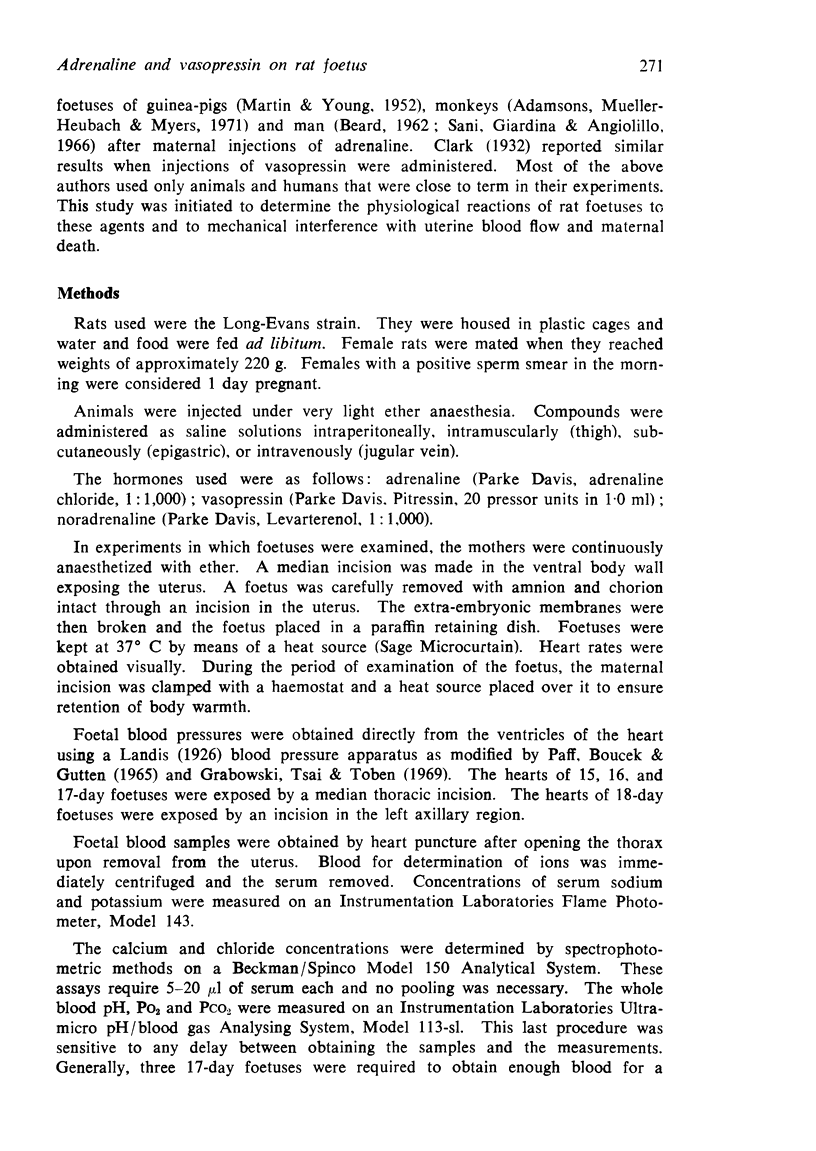

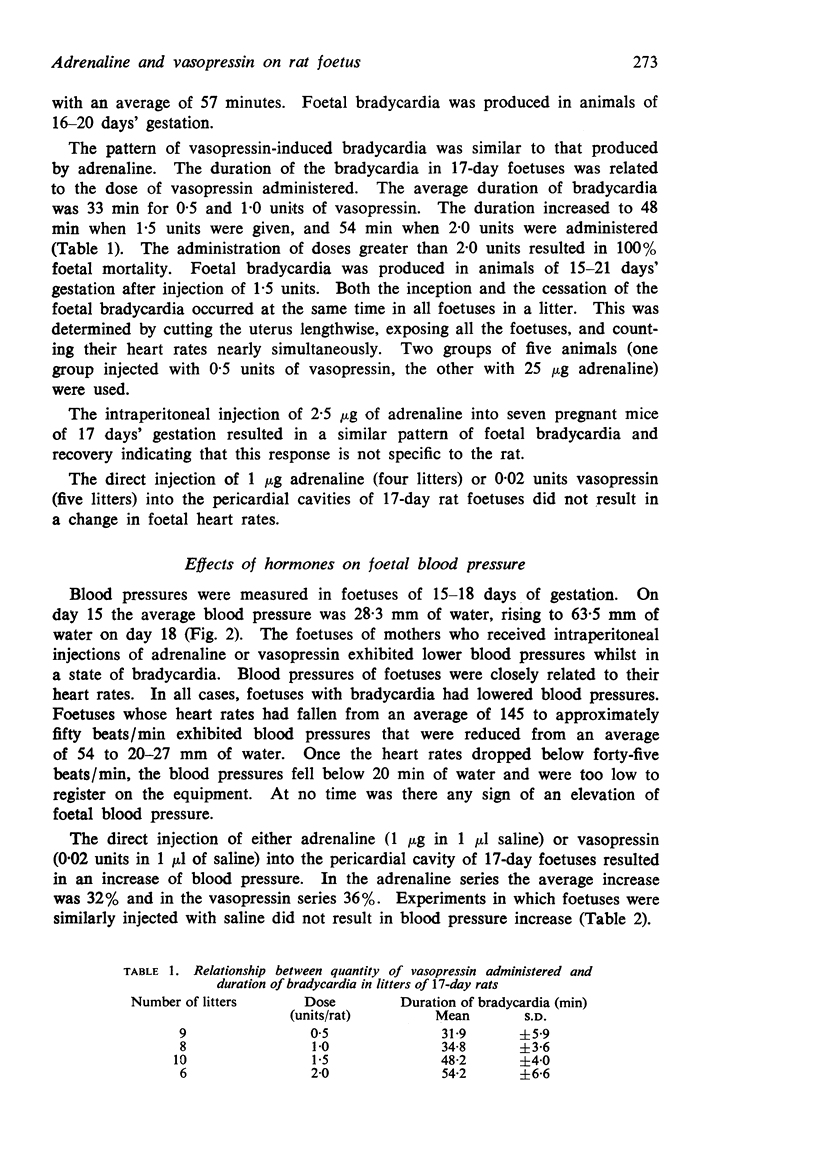
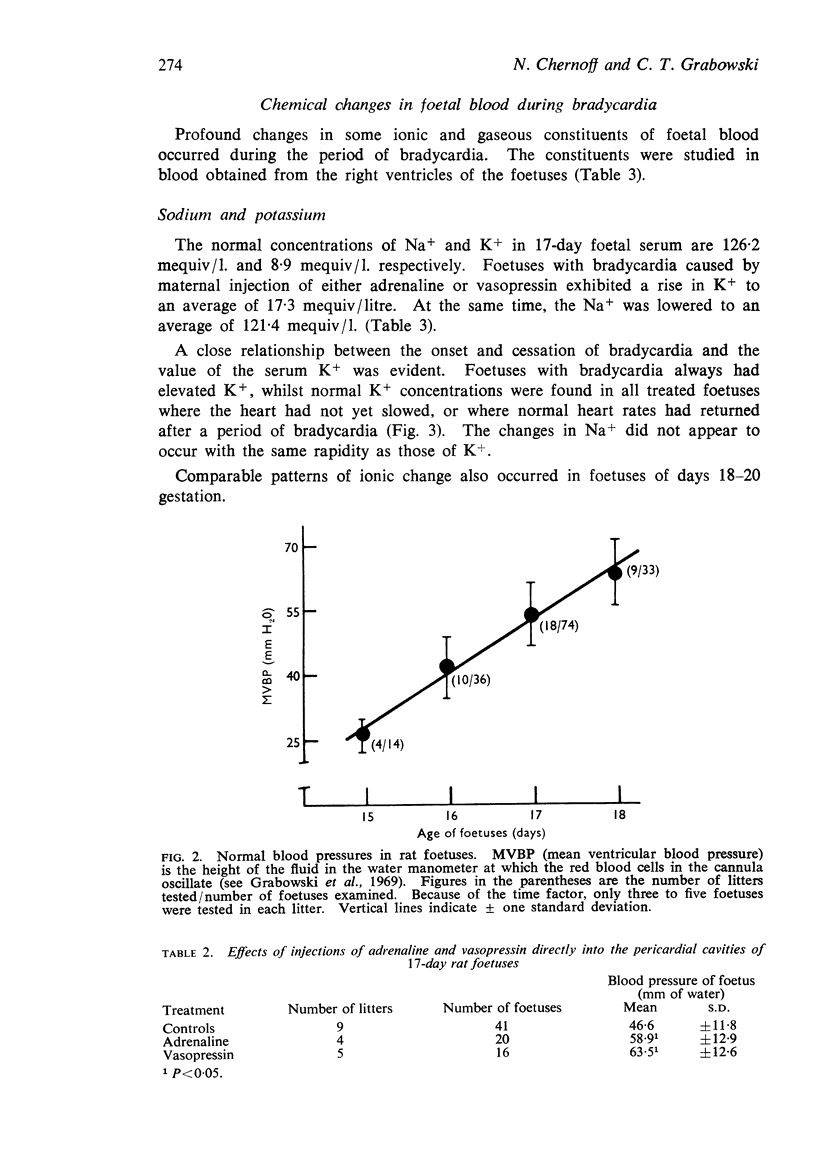
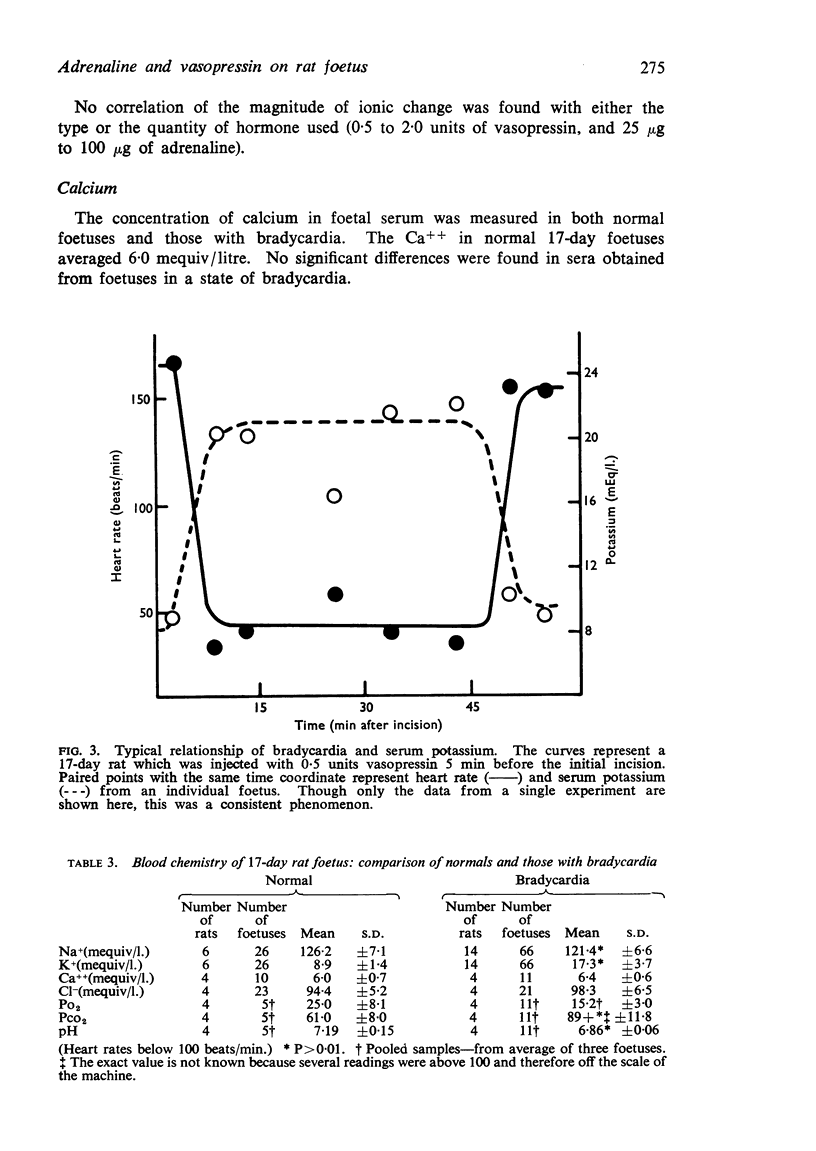


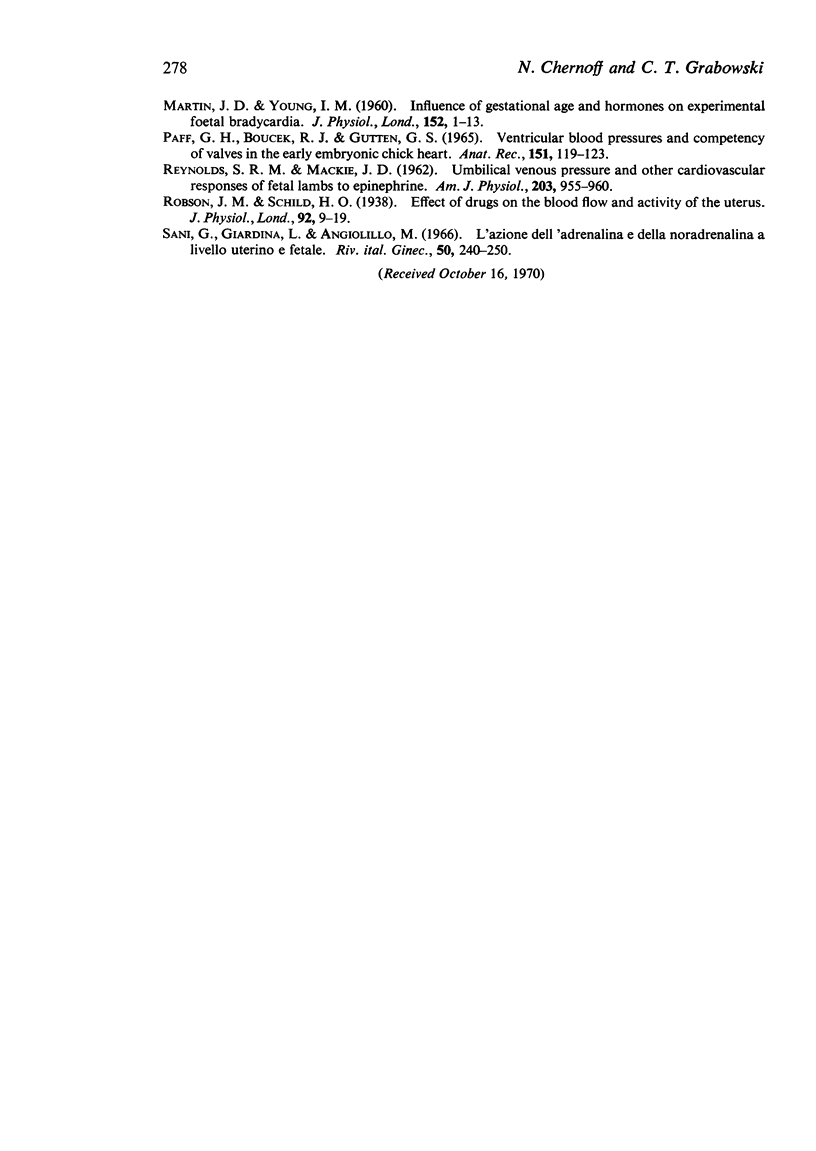
Selected References
These references are in PubMed. This may not be the complete list of references from this article.
- Adamsons K., Mueller-Heubach E., Myers R. E. Production of fetal asphyxia in the rhesus monkey by administration of catecholamines to the mother. Am J Obstet Gynecol. 1971 Jan 15;109(2):248–262. doi: 10.1016/0002-9378(71)90873-8. [DOI] [PubMed] [Google Scholar]
- BEARD R. W. Response of human foetal heart and maternal circulation to adrenaline and noradrenaline. Br Med J. 1962 Feb 17;1(5276):443–446. doi: 10.1136/bmj.1.5276.443. [DOI] [PMC free article] [PubMed] [Google Scholar]
- BRENT R. L., FRANKLIN J. B. Uterine vascular clamping: new procedure for the study of congenital malformations. Science. 1960 Jul 8;132(3419):89–91. doi: 10.1126/science.132.3419.89-a. [DOI] [PubMed] [Google Scholar]
- Carter A. M., Göthlin J. Effects of angiotensin, oxytocin and vasopressin on placental circulation. An angiographic study in rabbits. Invest Radiol. 1970 Mar-Apr;5(2):86–91. doi: 10.1097/00004424-197003000-00002. [DOI] [PubMed] [Google Scholar]
- Clark G. A. Some foetal blood-pressure reactions. J Physiol. 1932 Apr 26;74(4):391–400. doi: 10.1113/jphysiol.1932.sp002856. [DOI] [PMC free article] [PubMed] [Google Scholar]
- GREISS F. C. The uterine vascular bed: effect of adrenergic stimulation. Obstet Gynecol. 1963 Mar;21:295–301. [PubMed] [Google Scholar]
- Grabowski C., Tsai E. N., Toben H. R. The effects of teratogenic doses of hypoxia on the blood pressure of chick embryos. Teratology. 1969 Feb;2(1):67–76. doi: 10.1002/tera.1420020109. [DOI] [PubMed] [Google Scholar]
- MARTIN J. D., YOUNG I. M. Influence of gestational age and hormones on experimental foetal bradycardia. J Physiol. 1960 Jun;152:1–13. doi: 10.1113/jphysiol.1960.sp006465. [DOI] [PMC free article] [PubMed] [Google Scholar]
- PAFF G. H., BOUCEK R. J., GUTTEN G. S. VENTRICULAR BLOOD PRESSURES AND COMPETENCY OF VALVES IN THE EARLY EMBRYONIC CHICK HEART. Anat Rec. 1965 Feb;151:119–123. doi: 10.1002/ar.1091510203. [DOI] [PubMed] [Google Scholar]
- REYNOLDS S. R., MACKIE J. D. Umbilical venous pressure and other cardiovascular responses of fetal lambs to epinephrine. Am J Physiol. 1962 Nov;203:955–960. doi: 10.1152/ajplegacy.1962.203.5.955. [DOI] [PubMed] [Google Scholar]
- Robson J. M., Schild H. O. Effect of drugs on the blood flow and activity of the uterus. J Physiol. 1938 Feb 16;92(1):9–19. doi: 10.1113/jphysiol.1938.sp003579. [DOI] [PMC free article] [PubMed] [Google Scholar]
- Sani G., Giardina L., Angiolillo M. L'azione dell'adrenalina e della nor-adrenalina a livello uterino e fetale. Osservazioni clinico-sperimentali. Riv Ital Ginecol. 1966 Mar;50(3):240–250. [PubMed] [Google Scholar]


